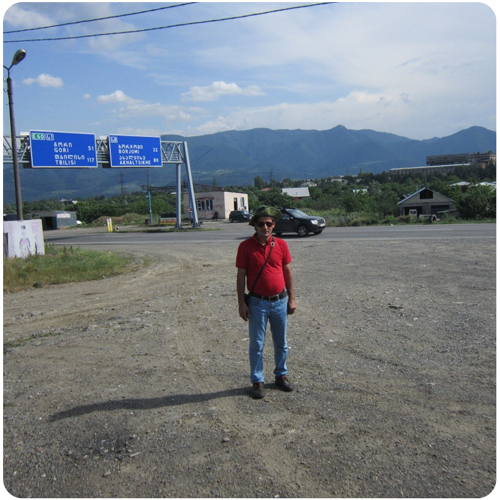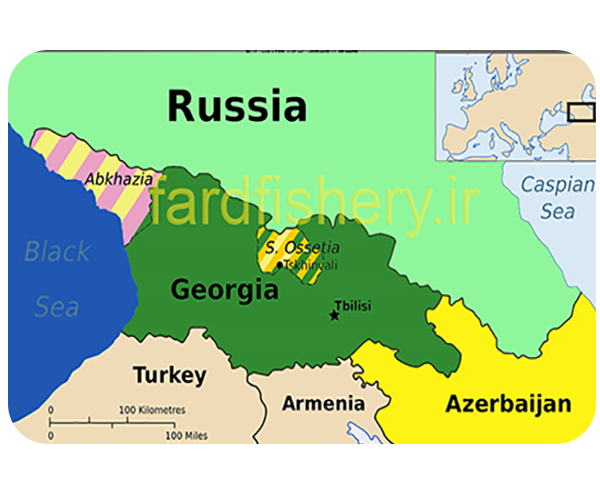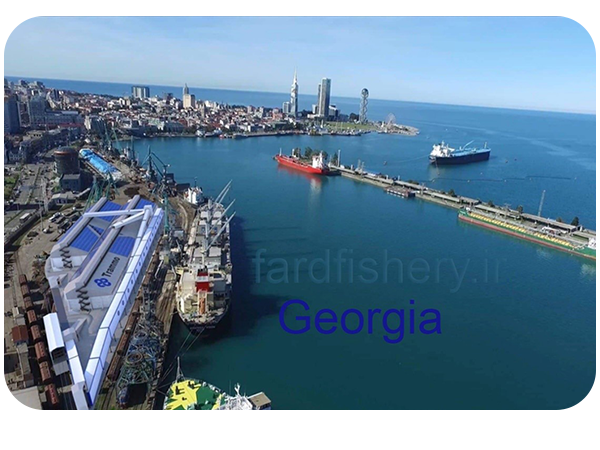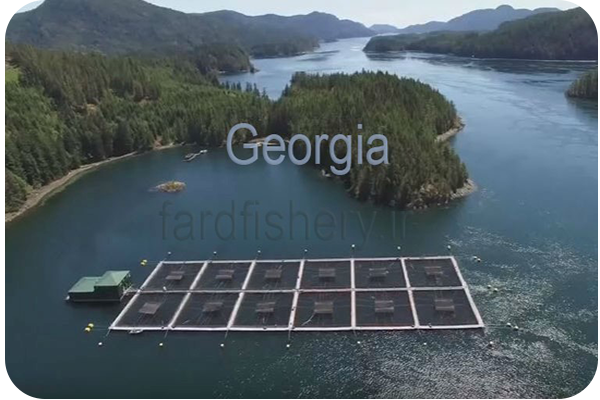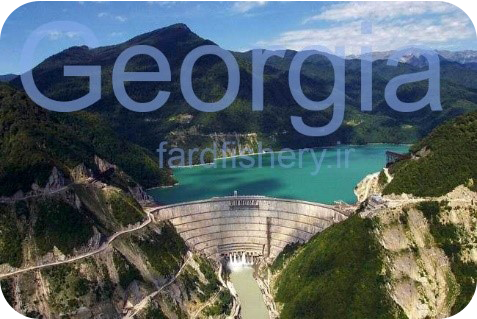Fish farming in Georgia
Given our field of activity in Georgia and our trips to Georgia, we decided to post information on fish farming in Georgia on the Fard Fisheries Department website to provide an introduction to those interested in doing so.
Behrouz Fard
Fisheries Analyst and Complicator
Georgia is a country in the Caucasus and Eurasia region. Situated in Western Asia and Eastern Europe, it borders the West with the Black Sea, the North with Russia, the South with Turkey and Armenia, and the South-East with the Republic of Azerbaijan. Its capital and largest city is Tbilisi. Georgia has an area of 69700 square kilometers and its population in 2017 was about three point eight tenths of a million. Georgia is a centralized, semi-democratic republic and its government is elected through proxy democracy. Georgia is one of the countries in both Europe and Asia and one of the targets of the Georgian authorities in the Georgian capital Tbilisi, Is membership in the European Union and NATO, which is currently a moderator member of the European Union and NATO.
Indigenous Georgians are Orthodox Christian Georgians. Interestingly, Georgians are among the countries that have both languages and alphabets, which is one of the fourteen alphabets in the world.
The history of life in Georgia is about one million eight hundred thousand years old known as Iberia in ancient times and is now widely known in many languages and in many forms, and in the Greek word georgia is also used to refer to agriculture.
Energy
In terms of hydroelectricity, it has a special place between independent and European countries. Georgia is ahead of many European countries in terms of hydroelectricity, which is currently producing needed electricity on its land, as well as exporting excess electricity to countries like Exports to Armenia, Azerbaijan and Turkey.
Georgia is a country with plenty of water and wind that is used extensively to generate electricity. The Inguri Dam is Georgia’s largest dam, and of course the world’s five largest dams. Meanwhile, wind power plants in the north of Georgia generate huge amounts of electricity annually, with natural gas covering most of the industry and energy, agriculture and all major cities and towns.
Rail Line
As for the Georgian Railway route, the Tbilisi route connects Samtredia to countries such as Russia, the Caucasus and Georgia, and because of their locomotive and wagon line production, rail towing power is high compared to its neighboring and neighboring countries.
Seafront and ports
The port of Poti is one of the largest Black Sea ports and plays an important role in the Black Sea ports of supply not only for Georgia but also for Armenia, Azerbaijan, Kazakhstan, Turkmenistan and Kyrgyzstan. In recent years, due to political instability and lack of security for long-term and high-risk investments in Georgia, there has been a slight tendency on the part of government and, to a certain extent, the private sector to enter the market, but in recent decades, The current and relatively favorable conditions of this country which have been partially reduced by problems and crises; It has reached a level of security and stability, and these relations are developing in all fields, and the volume of Georgia’s trade with other countries has seen an upward and downward trend.
Poti Port is one of the most important industrial ports of the Black Sea and one of the most important ports in the world and millions of tons of goods are imported and exported daily from this port.
Georgia export destinations: Russia, Turkey, Azerbaijan, Turkmenistan, Bulgaria, Armenia, Ukraine, Belarus, Saudi Arabia, Kazakhstan, Kyrgyzstan, Serbia, Uzbekistan and Norway
Georgia Imports: Russia, Turkey, Azerbaijan, Ukraine, Germany, USA and Turkmenistan
Georgia has an advanced domestic and foreign air transport system There are about ten airports that can be used for aircraft, with Tbilisi, Batumi, Sukhumi and Poti being the most important airports in Tbilisi for Istanbul purposes, Baku, Yerevan, Dubai, Sukhumi, Nalchik, Mineralni Vedi, Tashkent, Kiev, Moscow, Tehran and Berlin, Paris, Warsaw and Minsk.
The rivers of Georgia are of great economic importance and the country has many rivers that are suitable for fish breeding due to the environmental rules. They are located in South Georgia. In the eastern part, the rivers of the Black Sea Basin network are denser and with greater water volume. But in western Georgia due to heavy rainfall, there are small streams, some of which are fed by the swamp and rain and enter the Black Sea, which does not have any specimens in the river basin.
The rivers in southern Georgia and the Javakheti region are generally fed by lakes and groundwater.
Georgia does not have many lakes but these lakes have a great role in the beauty of Georgia. Most lakes are in Javakheti. Basalt Lake is located in the eastern part of Georgia and a small list lake in Tbilisi and in some areas an artificial lake.
According to estimates from hydroelectric sources, Georgia plays an important role among the CIS countries. It is said that in many foreign countries such as France, Italy, Spain, Austria, Greece, Portugal and Serbia Ingorie Dam is the third largest and largest dam in the world. Georgia’s new power plants are Namakhani, Zhenti, Khador and Kakheti.
It is one of the richest countries in the former Soviet Union because of its access to open waters, favorable weather, almost advanced agriculture, mines, and the exploitation of the tourism industry. The Georgian people had a high standard of living, but after the collapse of the Soviet Union in the 1991, the outbreak of civil war saw the Georgian economy as a newly independent country in severe crisis. But recently Georgia has had a relatively advanced and relatively advanced economy relative to its surrounding countries, as well as to those of its alignment countries, and significant growth has emerged in the Georgian economy.
The country’s agricultural market is booming with exports, for example, in the eastern and southeastern regions of Georgia. There are many orchards that are unique or unique in their kind. Cultivation of citrus and tea is very favorable in the agricultural sector: cereals, industrial crops, potatoes, vegetables and the crop and forage sector have significant crops.

